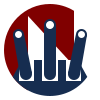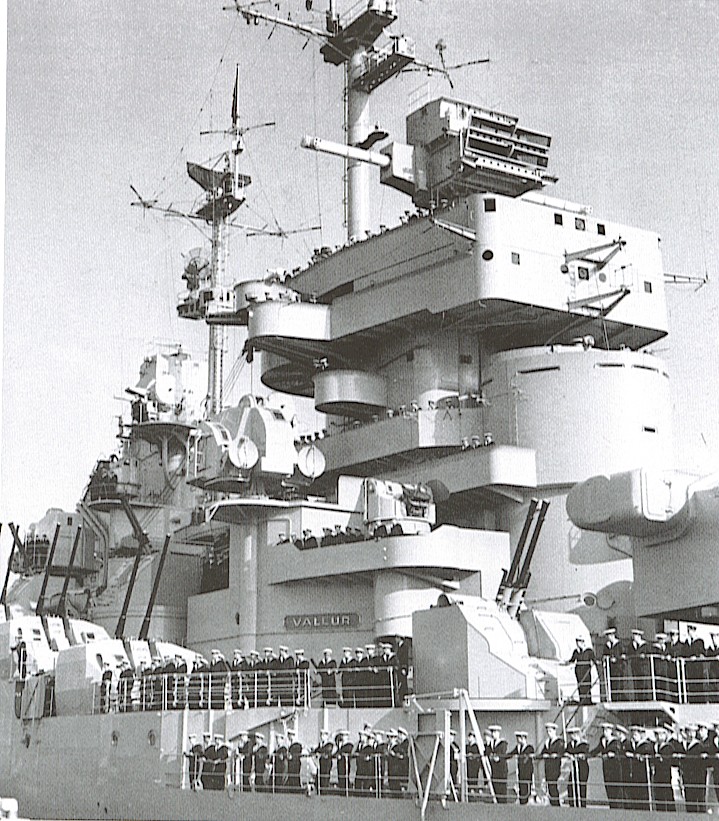
A Bofors water-cooled design that was used by both Netherlands and France as well as the Sweden Navy. Bofors introduced this weapon shortly after World War II as a scaled-up version of the 40 mm/70 Model 1948.
Unlike previous 40 mm guns, Bofors abandoned the four-round clip for the 57 mm guns as they considered that the loaders could not easily handle the heavier clips. Instead, for this weapon the loaders dropped individual rounds into ammunition boxes which in turn feed quadrant-shaped hoppers. The hoppers were mounted at the gun's trunnions such that the position of the gravity feed was always horizontal and perpendicular to the gun's axis. Similar feed systems can be seen in other postwar Bofors and Breda weapons.
In a review following the end of World War II, the French Conseil Superieur decided that the 40 mm Bofors heavy AA MG was inadequate against modern aircraft. That decision led to the purchase of the Bofors 57 mm AA gun. These guns were installed in a French-designed twin turret which was used on Jean Bart after World War II when she was extensively modernized and on new destroyer construction.
Jean Bart did not receive her guns until the winter of 1951-52, as production had been delayed by credit blockages in France during 1948-49. Jean Bart as completed probably had the best conventional AA armament ever fitted to a battleship, but the effectiveness of these weapons in the jet age is questionable.
| Designation | Sweden and Netherlands: 57 mm/60 (2.25") SAK Model 1950
France: 57 mm/60 (2.25") Model 1951 |
|---|---|
| Ship Class Used On | Sweden: Halland class
Netherlands: De Ruyter class (first ships to use this weapon) France: Jean Bart (1952), De Grasse, Colbert, Surcouf, Duperré and Le Normand classes |
| Date Of Design | 1951 |
| Date In Service | 1952 |
| Gun Weight | N/A |
| Gun Length oa | N/A |
| Bore Length | about 134.6 in (3.420 m) |
| Rifling Length | N/A |
| Grooves | N/A |
| Lands | N/A |
| Twist | N/A |
| Chamber Volume | N/A |
| Rate Of Fire | 120 rounds per minute cyclic |
| Type | Fixed |
|---|---|
| Weight of Complete Round | 13.78 - 14.07 lbs. (6.25 - 6.38 kg) |
| Projectile Types and Weights | Sweden
HE (tracer): 5.89 lbs. (2.67 kg) HE, proximity-fuze Model 1964: 5.62 lbs. (2.55 kg) HE, proximity-fuze Model 1964 Type V: 5.62 lbs. (2.55 kg) AP solid shot (tracer), Model 1967: (2.70 kg) France
|
| Bursting Charge | Sweden
HE (tracer): 0.75 lbs. (0.34 kg) HE, proximity-fuze Model 1964: 0.75 lbs. (0.34 kg) HE, proximity-fuze model 1964 Type V: 0.57 lbs. (0.26 kg) AP solid shot (tracer), Model 1967: None (solid shot) France
|
| Projectile Length | N/A
Overall Length: 26.5 in (67.2 cm) |
| Propellant Charge | Sweden
All HE rounds: 2.20 lbs. (1.0 kg) NC894 or NC1049 AP: 2.18 lbs. (0.99 kg) France
|
| Cartridge | 57 mm x 438 mm |
| Muzzle Velocity | Originally: 3,018 fps (920 mps)
Sweden: 2,887 - 2,920 fps (880 - 890 mps) France: 2,840 fps (865 mps) |
| Working Pressure | N/A |
| Approximate Barrel Life | N/A |
| Ammunition stowage per gun | France: 80 ready rounds on mount, about 1,500 in magazines 1 Others: N/A |
- ^Total outfit for Jean Bart with 28 barrels was 42,000 rounds, made up of 28,000 rounds with day tracers and 14,000 rounds with night tracers.
| Elevation | Sweden 5.73 lbs. (2.96 kg) | France 6.53 lbs. (2.6 kg) |
|---|---|---|
| 45 degrees | 14,220 yards (13,000 m) | 15,860 yards (13,000 m) |
| AA Ceiling | 16,400 feet (5,000 m) | 18,040 feet (5,500 m) |
| Designation | Twin Mounts
Sweden and Netherlands 1a Halland (1) and De Zeven Provinciën (4): Model 1950 France 2a 3a |
|---|---|
| Weight | Model 1950: 23 tons (24 mt)
Model 1948: 16 tons (17 mt) |
| Elevation | Model 1950: -10 / +90 degrees
Model 1948/: -10 / +94 degrees |
| Elevation Rate | Model 1950: N/A
Model 1948: 25 degrees per second |
| Train | 360 degrees |
| Train Rate | Model 1950: N/A
Model 1948: 25 degrees per second |
| Gun recoil | N/A |
- ^The mounting used by the Sweden and Netherlands navies was fully-automatic and radar controlled. However, the weight was too much for the French requirement, as it was nearly half the weight of their twin 127 mm (5") destroyer mounting. This led the French to develop their own, lighter and simpler design.
- ^The French mounting used the Bofors fan-feed system for supply ammunition. Each gun had an 80-round ready box which was refilled by hand at a rate of about 40 rounds per minute. Ammunition was supplied by a hoist to a lower handling room.
- ^The French mountings were controlled by self-contained fire control systems that included a radar director triaxially stabilized for roll-pitch and yaw. The fire control system itself was manufactured by Contraves and could automatically follow the target after acquisition. No manual intervention other than pushing a button in the central fire control station was required to open and maintain fire.
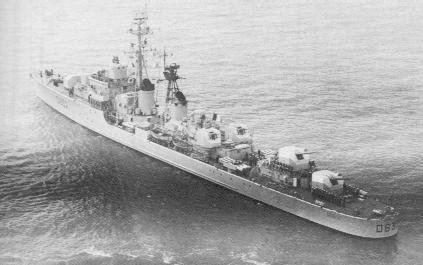
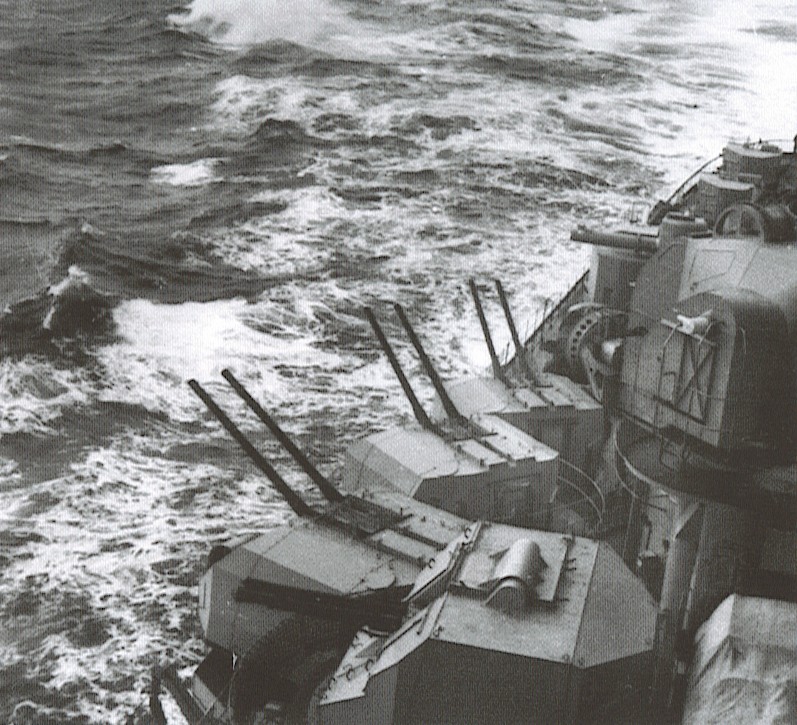
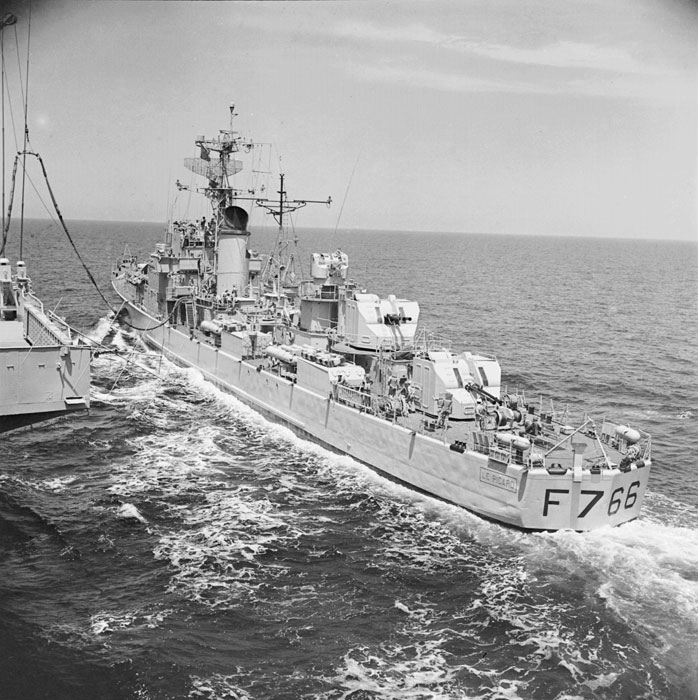
"Les Cuirassés: Dunkerque, Strasbourg, Richelieu & Jean Bart" by Robert Dumas
"The Naval Institute Guide to World Naval Weapon Systems 1991/92" by Norman Friedman
"Battleships: Allied Battleships in World War II" by W.H. Garzke, Jr. and R.O. Dulin, Jr.
"Örlogsfartyg" by Gustaf von Hofsten and Jan Waernberg
"French Battleships: 1922 - 1956" by John Jordan and Robert Dumas
---
"Surcouf: The French Postwar Destroyers" articles by John Jordan in "Warship Volume IX"
Ammunitionskatalog Marinen, 1977
---
Bofors Defence Press Releases
---
Special help from Mats T. Persson and Matthew Rodchenko
16 November 2006 - Benchmark
29 November 2009 - Added photographs and information on French mountings
28 March 2012 - Updated to latest template
06 April 2013 - Added picture of La Picard
01 February 2024 - Converted to HTML 5 format
